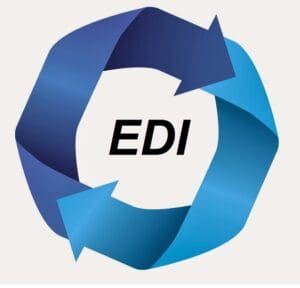[ad_1]
 Note: Today’s post is part of our “Editor’s Choice” series where we highlight recent posts published by our sponsors that provide supply chain insights and advice. Today’s article comes from Descartes and looks at EDI can streamline supply chain operations. For those unsure of what EDI is, it stands for electronic data interchange, is the concept of businesses electronically communicating information that was traditionally communicated on paper, such as purchase orders, advance ship notices, and invoices. Technical standards for EDI exist to facilitate parties transacting such instruments without having to make special arrangements.
Note: Today’s post is part of our “Editor’s Choice” series where we highlight recent posts published by our sponsors that provide supply chain insights and advice. Today’s article comes from Descartes and looks at EDI can streamline supply chain operations. For those unsure of what EDI is, it stands for electronic data interchange, is the concept of businesses electronically communicating information that was traditionally communicated on paper, such as purchase orders, advance ship notices, and invoices. Technical standards for EDI exist to facilitate parties transacting such instruments without having to make special arrangements.
1. How does EDI solve the problem of manual data entry and inefficiency in supply chains?
EDI eliminates the need for manual data entry by automating the exchange of business documents. This automation speeds up transaction processing, reduces errors caused by human input, and improves overall operational efficiency. By streamlining processes, EDI allows companies to focus on higher-value tasks and respond quickly to changing market demands.
2. How does EDI enhance data accuracy and integrity in supply chain transactions?
EDI minimizes the risk of errors associated with manual data entry. By electronically transmitting standardized documents between trading partners, EDI ensures that information remains consistent and accurate throughout the supply chain. This accuracy leads to fewer discrepancies in orders, shipments, and payments, thereby improving the reliability of business transactions.
3. How does EDI contribute to faster order processing and responsiveness in supply chains?
EDI enables real-time or near-real-time communication between trading partners. This rapid exchange of information expedites order processing, allowing companies to respond quickly to shifts in demand, supply disruptions, or changes in market conditions. As a result, companies can adapt to changes more effectively and maintain a competitive edge.
4. How does EDI reduce paperwork and associated costs in supply chain operations?
EDI eliminates the need for physical documents, such as printed purchase orders and invoices.
To read the full article, click HERE.
[ad_2]
Source link












